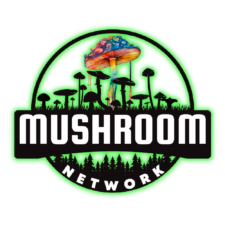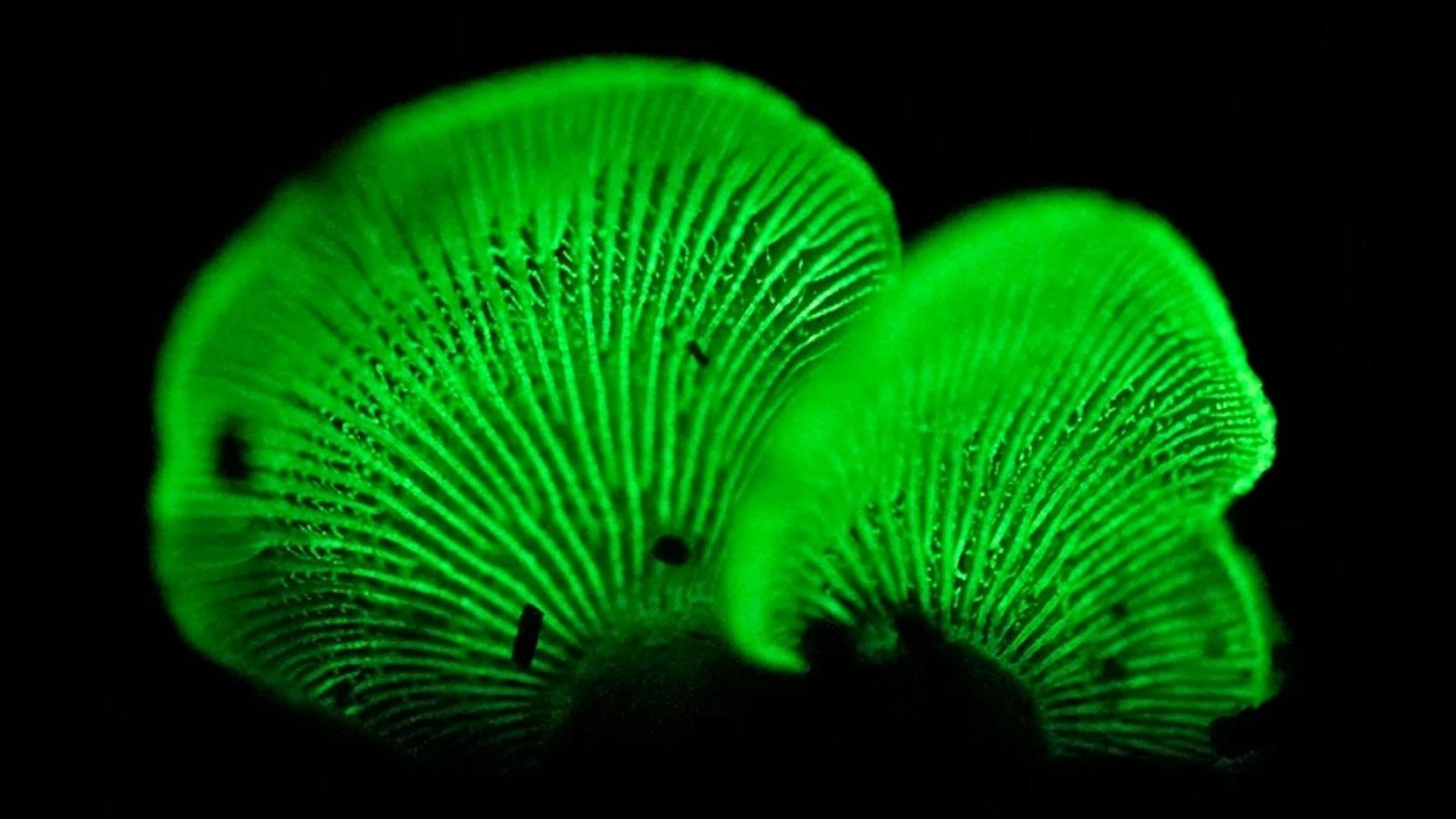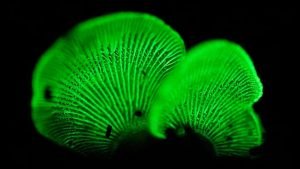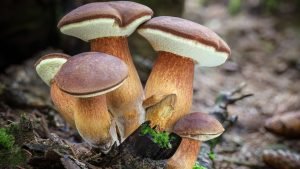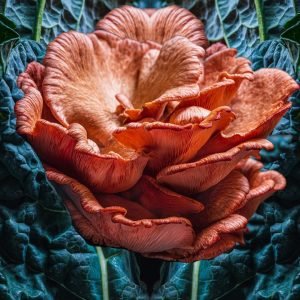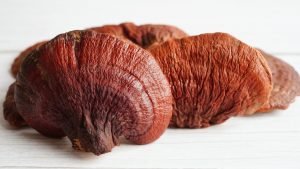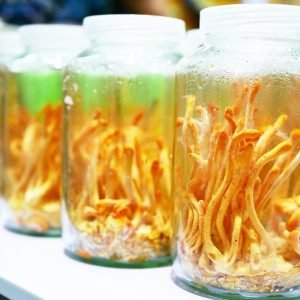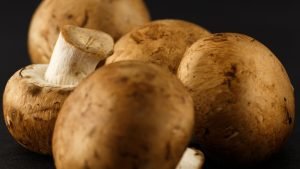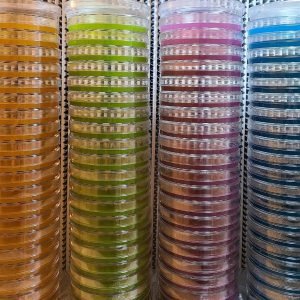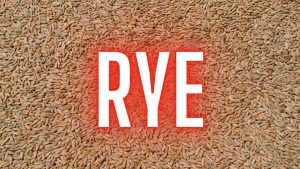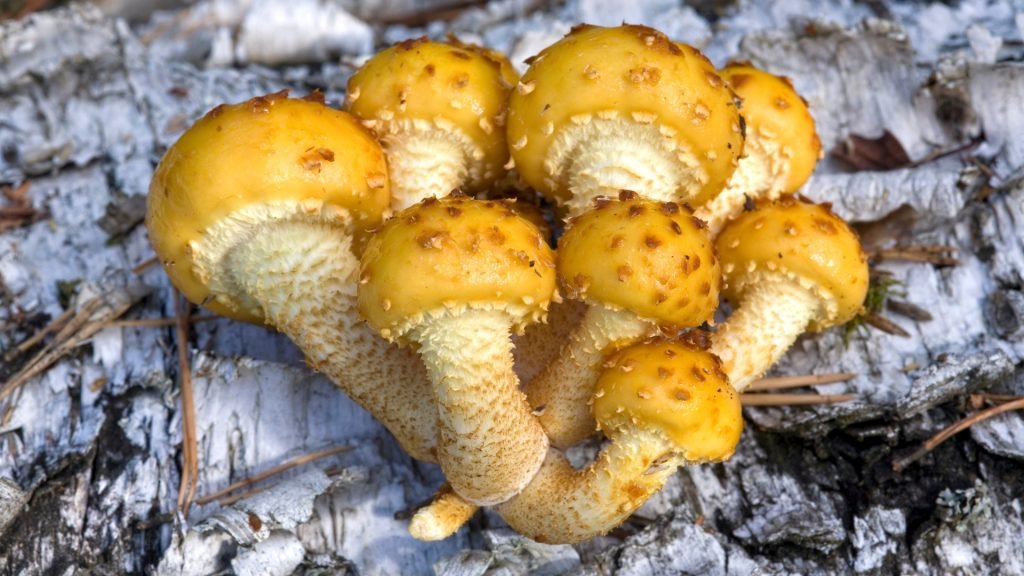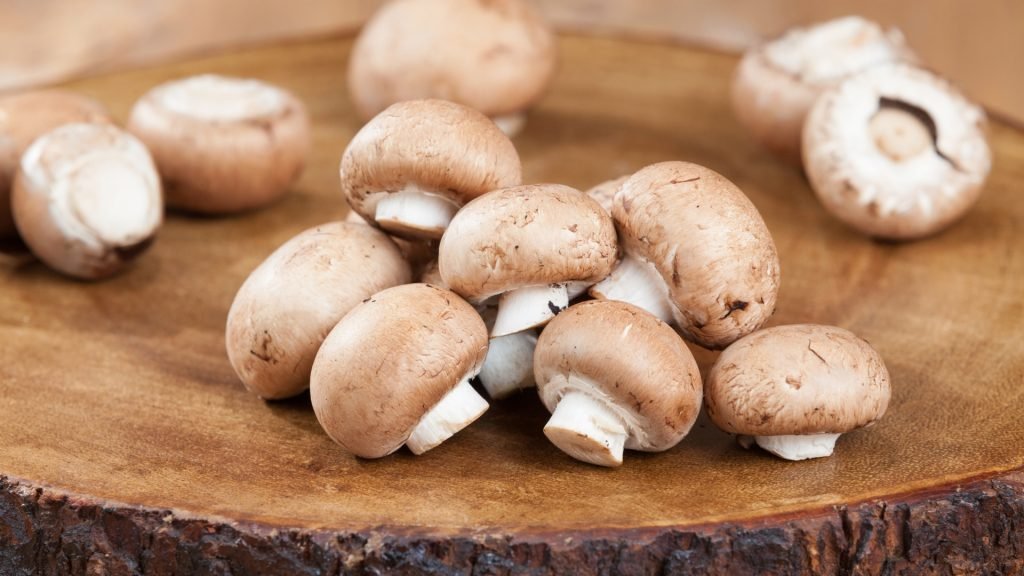Welcome, esteemed mycologists and curious minds! Today, we delve into the intriguing world of Panellus Stipticus, also known as the Bitter Oyster. This remarkable species offers a blend of ecological significance and nocturnal beauty, perfect for those enchanted by the lesser-known marvels of the fungal kingdom.
SCIENTIFIC NAME:
(Panellus Stipticus)
COMMON NAME(S):
Bitter Oyster | Luminous Panellus | Twilight Forest Lamp
I-NAME:
BIT
Founding Mycologist/Discovered By:
The discovery of Panellus Stipticus is not attributed to a single individual, reflecting the collective curiosity of generations of mycologists. Contributions to its historical narrative are always welcome.

RECOMMENDED TEMPERATURES
Colonizing Temps:65° – 70° | Fruiting Temps:60° – 65° |
SPORE COLOR:
PALE CREAM
Embark on a journey through the mystical world of Panellus Stipticus, a species revered not only for its curious bitter taste but also for its enchanting nocturnal glow, casting a natural luminescence in the forest’s twilight.
DESCRIPTION:
This unique mushroom sports a semi-circular, oyster-like cap with a slightly lobed margin. Its surface is smooth and moist, ranging from olive-brown to dark green. Underneath, the gill-like structures emit a captivating greenish glow in the dark, a characteristic that has fascinated mycologists and nature lovers alike.
INTENDED USES:


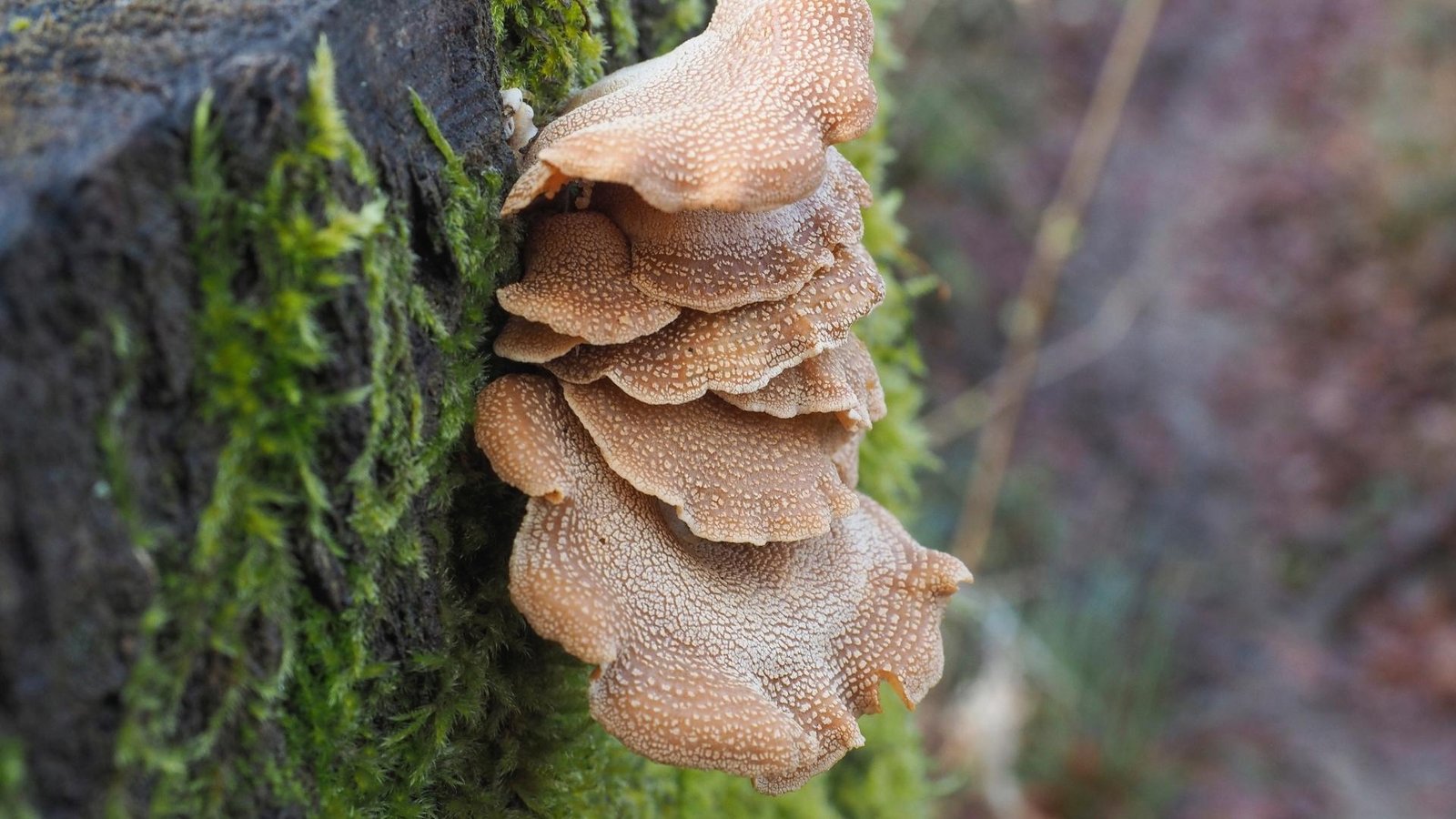
HABITAT AND DISTRIBUTION:
Preferring damp, wooded areas, Panellus Stipticus typically grows on decaying coniferous and hardwood logs, forming an integral part of forest ecosystems across North America, Europe, and Asia.
ECOLOGICAL ROLE:
As Saprotrophic Fungi, it plays a vital role in breaking down lignin and cellulose in wood, facilitating nutrient cycling and forest regeneration.
GROWTH AND CULTIVATION:
Cultivating Panellus Stipticus can be a rewarding challenge for mycologists, requiring controlled conditions that mimic its natural humid and woody habitat.
No posts found!
HISTORICAL & CULTURAL INFO:
This species has long captivated human imagination, often featuring in folklore and myth as a mystical source of forest light. Its bioluminescent properties have inspired numerous scientific inquiries and artistic representations.
GENETIC LINEAGE/HISTORY:
Part of the Mycenaceae family, its genetic makeup reveals a fascinating evolutionary adaptation to its ecological niche, particularly its luminescent capabilities.
No posts found!
CHEMICAL COMPOSITION:
The chemical constituents responsible for its bioluminescence have been a subject of scientific fascination, offering potential insights into enzymatic reactions and energy utilization in fungi.
MEDICAL PROPERTIES (if applicable):
Currently, there is limited evidence of medicinal properties in Panellus Stipticus. Ongoing research is exploring potential applications in the realms of medicine and biotechnology.
CULINARY USES (not recommended):
While not toxic, the Bitter Oyster’s astringent taste makes it unsuitable for culinary use. Its value lies in its ecological role and visual appeal.
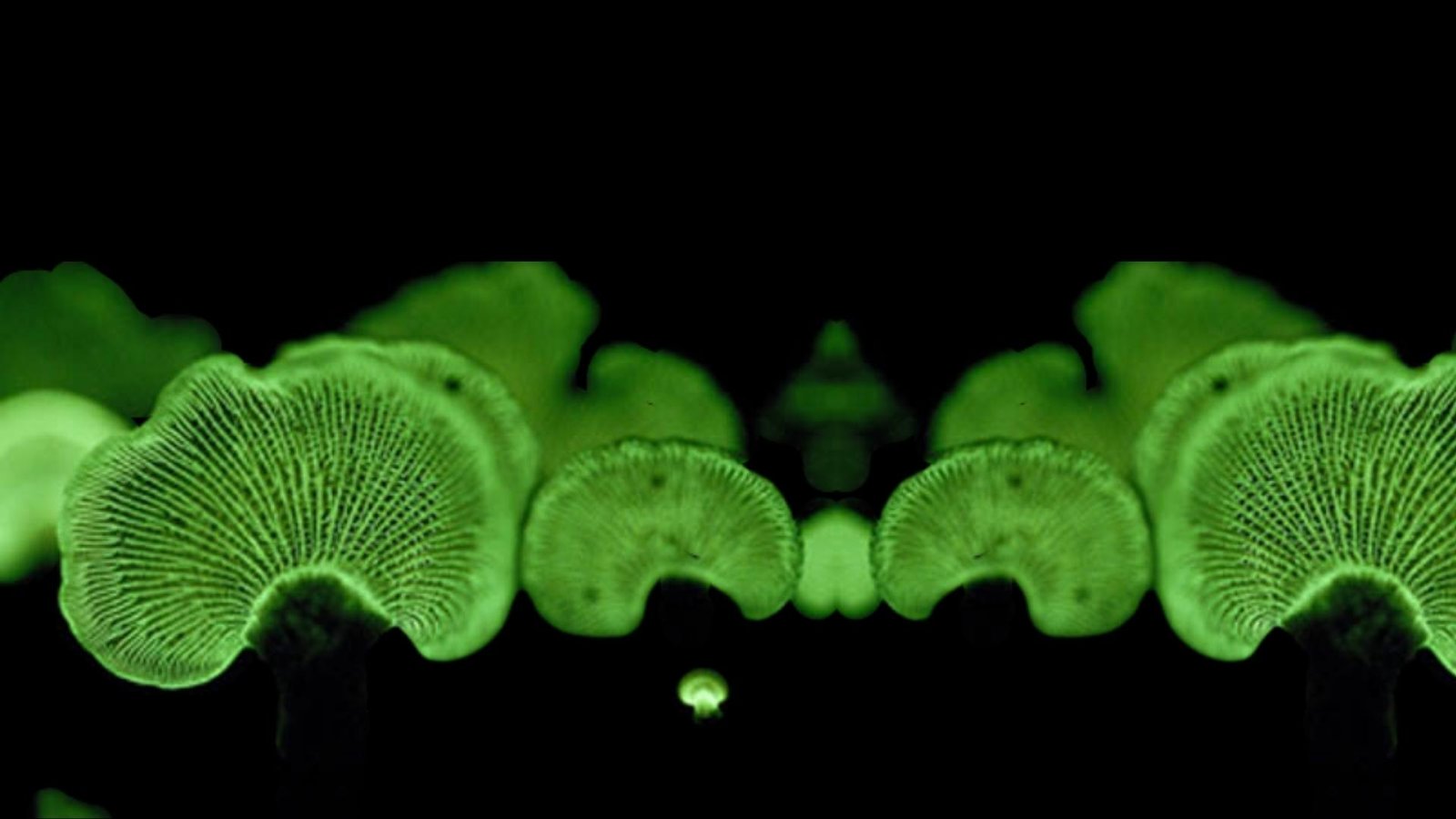
CAUTIONS & WARNINGS:
Proper identification is crucial, as its appearance can be similar to other non-edible or toxic species. It’s advisable to consult with experienced mycologists when encountering this mushroom in the wild.
FINAL CONSIDERATIONS:
As we conclude our exploration of the Bitter Oyster, let’s appreciate it as a glowing symbol of nature’s mysteries and a reminder of the hidden wonders in our forests. Dive into our 🍄 Marketplace to discover more about this and other fascinating fungal species. Thank you for joining us in the glowing world of the Bitter Oyster. As you venture into the forests, remember, in the darkest woods, the smallest glow can be the most enlightening. Keep your eyes and minds open for the luminous secrets of the fungal realm!
Don’t forget to check out the 🍄 Mushroom Network’s Marketplace to see what’s available. But hurry, our shelves are constantly evolving, and you wouldn’t want to miss out on this wonderful mushroom. Join our growing network of Patrons, Genetics, and Mycologist Vendors only on the 🍄 Mushroom Network!
No posts found!
No posts found!
FAQs:
Its bioluminescence is due to enzymatic reactions within the fungus.
While it’s not poisonous but is generally considered inedible due to its bitter taste.
On decaying wood in damp, wooded areas, particularly on coniferous and hardwood logs.
While not currently recognized for medicinal uses, ongoing research is exploring its potential.
It aids in decomposing wood, playing a key role in nutrient cycling and forest regeneration.
Related Articles:
Bitter Oyster (Panellus Stipticus)
Welcome, esteemed mycologists and curious minds! Today, we delve into the intriguing world of Panellus...
Read More...Fungi’s Fab Five: The Most Photogenic Mushrooms
About This Article: Say cheese, fungi fans! Check out these photogenic mushrooms that are ready...
Read More...Other Mushroom Species To Research:
Bay Bolete (Imleria Badia)
Hello, esteemed mycophiles and curious minds alike! Whether you’re a seasoned mycologist or a fledgling...
Read More...Pink Oyster (Pleurotus Djamor)
Scientific Name: Pleurotus Djamor COMMON NAME(S): Pink Oyster | Salmon Oyster | Indian Oyster |...
Read More...False Parasol (Chlorophyllum Molybdites)
SCIENTIFIC NAME: (Chlorophyllum Molybdites) COMMON NAME(S): False Parasol | Green Vomiter | Green-Spored-Parasol | Green...
Read More...Red Reishi (Ganoderma Lucidum)
Welcome to the illustrious world of fungi, where each mushroom carries its own unique story...
Read More...Other Recommended Reads:
Cordyceps Militaris: The Caterpillar Fungus
Cordyceps Militaris: The Caterpillar Fungus embarks on a journey to unravel the unusual life cycle,...
Read More...From Coastal America to Global Cultivation: The Journey of Agaricus Subrufescens
Mushrooms have always fascinated humans with their diverse forms, flavors, and medicinal properties. Among the...
Read More...LME and Beyond: The Varieties of Mycological Agar
About This Article: Unlock the secrets of fungal cultivation with our in-depth guide on mycological...
Read More...Rye TEK for Mycology: A Comprehensive Guide
Discover the magic of Rye grains, an esteemed substrate within the world of mycology. Often...
Read More...Whoa there, Spore Sport! 🍄 Looks like you’re not logged in yet. Don’t you know what you’re missing? MYCO-CREDITS! Imagine all the fungal fun you could have. It’s like finding a Morel in May and not picking it. Tragic, right? Log In or Become a Myco-Patron and start racking up those credits. It’s more rewarding than finding a mushroom in your backyard! 🌟🏡
